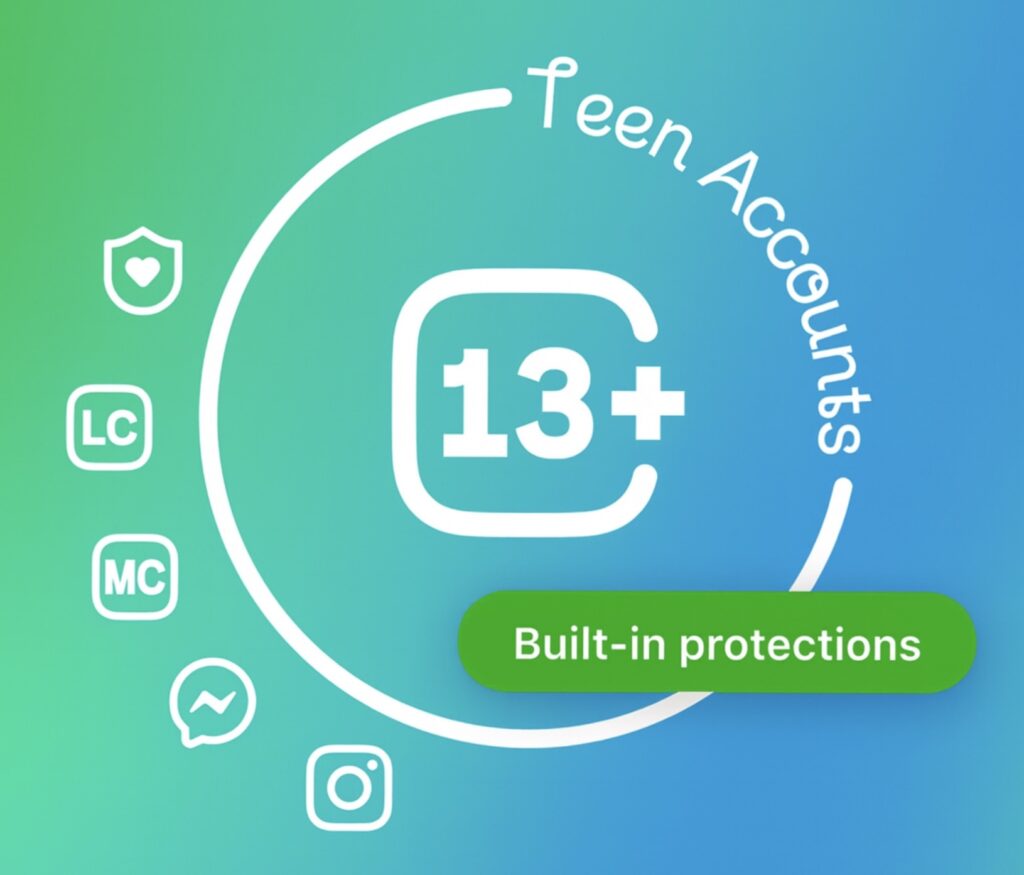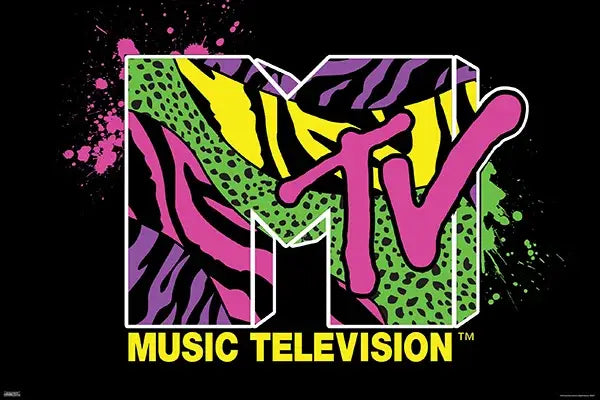instagram’s pg-13 err
Instagram is turning into the digital equivalent of a multiplex theater — only now, teens are getting the “PG-13” wristband. In its most sweeping safety update since the debut of “Teen Accounts” in 2024, the platform announced new rules limiting what under-18 users can see. From now on, teen accounts will be confined to PG-13 content, a decision that could reshape the dynamics of social media culture, influencer marketing, and youth engagement online.
The new rules don’t just filter posts. They rewrite the code of conduct for the entire app. If your feed includes explicit lyrics, drug paraphernalia, or even a risqué joke or two, your content might quietly vanish from teenage eyes. Meta, Instagram’s parent company, says it’s aiming to “make Instagram safer and more age-appropriate.” But beneath that PR gloss lies a deeper question: what happens to the internet when it starts enforcing movie-style ratings on human behavior?
the teenification of instagram
The seeds for this shift were planted last year when Meta began automatically classifying any account created by someone under 18 as a Teen Account. These profiles come with automatic privacy, reduced notifications between 10 p.m. and 7 a.m., and stricter content filters for Reels and Explore.
That move was widely interpreted as a defensive response to political pressure. Lawmakers and watchdogs have been scrutinizing Instagram’s role in youth mental health crises, especially after whistleblower Frances Haugen’s 2021 leaks revealed internal studies linking Instagram to body-image issues among teenage girls.
By 2025, the landscape had evolved: class-action lawsuits, Senate hearings, and parent-led advocacy groups had cornered Meta into reforming the way minors experience its apps. The result? A safer, quieter, more curated environment that mirrors PG-13 entertainment guidelines — where the line between safety and censorship blurs just enough to raise debate.
what the new rules mean
Under the updated framework, teen accounts will not only filter content — they’ll block entire accounts.
-
18+ content bans: Pages that promote or depict adult themes (drugs, sex, violence, gambling, or even “suggestive” music videos) will be invisible to teen users.
-
Restricted follows: Teens won’t be able to follow accounts with inappropriate usernames or external links leading to adult sites, liquor retailers, or subscription platforms like OnlyFans.
-
Search lockdown: Keywords like “gore,” “alcohol,” and other flagged terms will simply return no results.
-
Retroactive blocks: Even if a teen has been following an adult-leaning creator for years, the algorithm will now shield them from that content.
This marks a seismic shift in how social media defines age-appropriate access. It’s no longer about tagging content “sensitive” — it’s about algorithmic gatekeeping based on perceived maturity.
bots have to follow the rules too
Instagram’s new AI chatbots, introduced in 2025 to much fanfare, weren’t spared either. A Reuters report in August revealed that some of Meta’s experimental AI personalities had “flirtatious” or “suggestive” exchanges with underage users — a scandal that reignited public concern.
Now, Meta says all AI interactions with minors will remain within “PG-13 guidelines.” In other words, no more role-playing, romantic banter, or adult conversation threads with users under 18. The bots must behave like friendly tutors, not late-night companions.
This move places Meta ahead of the curve in regulating AI-human interactions — a domain where most competitors, from Snapchat’s My AI to OpenAI’s character chat integrations, have only begun to draft internal standards.
digital parenting in the age of algorithms
For parents, the update offers a long-overdue sense of relief. For creators, it introduces a new layer of anxiety.
A generation of influencers built careers on content that toes the line between edgy and explicit — from lifestyle vloggers sipping champagne to fashion influencers modeling lingerie. Now, those same posts might be filtered out of one of Instagram’s largest demographic pools: teenagers.
The tension between protection and authenticity runs deep here. Social platforms have long thrived on relatability — the sense that influencers are real, unfiltered peers. Yet as Meta moves toward a more sanitized feed, the raw, chaotic energy that once defined Instagram culture could fade into something safer but less spontaneous.
The PG-13 rule could even reshape how new creators approach their tone, captions, and visuals. We may soon see a wave of “teen-friendly” edits, brand partnerships touting their compliance with age-safe policies, and creators self-censoring for fear of algorithmic invisibility.
the broader tech reckoning
Instagram’s announcement didn’t land in isolation. The same day, Spotify unveiled enhanced parental controls, signaling a coordinated pivot in how digital platforms manage youth engagement.
This pattern mirrors an industry-wide reckoning — one where Big Tech companies, once champions of free expression, are now assuming quasi-parental roles. The push comes from two directions:
-
Public pressure, including investigative journalism and congressional hearings; and
-
Legislative threats, such as the Kids Online Safety Act (KOSA), which could mandate strict content moderation for underage users.
Meta’s decision to act proactively helps it frame these restrictions as self-regulation rather than government compliance. But the end result is the same: tighter control over what young users can see, say, and share.
social media’s “ratings system”
By invoking the movie-rating analogy, Instagram is tapping into a familiar cultural framework. For decades, film and television have used parental ratings to mediate what’s appropriate for different age groups. Applying that model to social media is both practical and symbolic — it acknowledges that platforms are no longer just communication tools but entertainment ecosystems.
However, unlike movies, social feeds aren’t linear or curated by human editors. They’re algorithmic mosaics, shaped by engagement metrics, watch time, and user data. Translating a movie-style age filter into that context means entrusting algorithms to decide what counts as “adult.”
That could be a problem. As content moderation researchers note, algorithms often fail to distinguish between context and intent. A post about breast-cancer awareness might get flagged alongside sexual content. A protest video could be mislabeled as “violent.” By outsourcing moral judgment to AI, Meta risks building an automated moral compass that reflects corporate caution rather than cultural nuance.
censorship flow
Not everyone is applauding. Critics argue that the PG-13 shift veers dangerously close to censorship disguised as safety.
Artists, educators, and activists who rely on Instagram to share sensitive but important material — from reproductive health to racial justice — fear their content could become invisible to teens who need it most. “If we can’t talk about real-world issues, how do we teach media literacy?” asks one digital-rights advocate.
There’s also concern about global inconsistency. What qualifies as “PG-13” in the U.S. may differ drastically in France, Japan, or Brazil. Meta’s universal rulebook risks enforcing Western cultural norms on a global user base.
At the same time, Instagram’s filters could ironically drive teens toward less regulated platforms like Telegram, Discord, or decentralized networks — spaces where adult content thrives with little oversight.
the economics of a pg-13 feed
From a business standpoint, the shift introduces a new economic calculus. Advertisers have long valued Instagram’s youth audience, but stricter content rules could reshape targeting strategies. Brands promoting alcohol, luxury nightlife, or even certain beauty products might lose visibility among younger demographics.
Conversely, the new environment opens fresh opportunities for family-safe brands, ed-tech startups, and wellness campaigns that align with parental expectations. Expect a wave of collaborations between Meta and organizations promoting digital well-being or youth empowerment.
In the short term, engagement metrics might dip — fewer viral memes, less provocative content, slower growth for creators who trade in controversy. But Meta’s bet is long-term trust: if parents feel safer letting their kids use Instagram, teen adoption rates could rebound after years of migration to TikTok and BeReal.
ai moderation
Behind the scenes, AI will shoulder most of the moderation work. Meta’s new classifiers will scan not just text but video, music, and metadata to flag adult material. This means even subtle cues — song lyrics, brand logos, or slang — could trigger demotion in teen feeds.
While this automation improves scale, it also amplifies error. AI models often misread sarcasm, subcultures, and artistic expression. A photo of a shirtless skateboarder might be tagged “nudity.” A protest sign with profanity could be hidden for “language violations.”
Meta insists that human oversight will remain part of the process, but as billions of posts circulate daily, the line between algorithmic decision and human review grows increasingly thin.
culture
For Gen Z, who grew up blending online identity with real life, the change feels both protective and paternalistic. On one hand, it shields them from predatory content. On the other, it infantilizes 17-year-olds who already navigate adult themes in film, music, and everyday conversation.
In schools and online forums, teens are already debating how the update might limit self-expression. Some call it “the end of real Instagram,” arguing that the app’s appeal lies in its unfiltered window into adult life. Others welcome the move as overdue — a boundary that keeps social media from becoming another source of anxiety and exploitation.
For creators targeting Gen Z, adaptation will be key. Expect a surge in dual-feed strategies — one clean, algorithm-approved page for teen audiences, and a separate, unfiltered presence on TikTok or Patreon.
the political undercurrent
Instagram’s PG-13 policy lands in the middle of a broader culture war over online youth protection. Politicians from both U.S. parties have demanded stricter regulation of social-media companies, often citing studies that link heavy social-media use to depression, anxiety, and disordered eating among teens.
Meta’s move could serve as a pre-emptive shield against future lawsuits and legislative penalties. By publicly aligning its moderation policy with PG-13 standards, the company positions itself as an industry leader in digital safety — and shifts responsibility for future harm away from its algorithms and onto the “non-compliant” creators themselves.
what comes next
The PG-13 rollout is just the beginning. Industry insiders expect Meta to expand its age-based ecosystem with tiered settings resembling video-game ESRB ratings. A “Teen+” or “Mature 17+” category could emerge, allowing slightly older users to access more nuanced content without fully entering the adult internet.
There’s also speculation about cross-platform integration — where Facebook, Messenger, and Threads all adopt similar restrictions. This would create a unified “Meta Youth Zone,” complete with AI filters, limited ad categories, and parental dashboards.
Such a system could become the model for all major tech companies, especially as regulators demand standardized age-verification processes across the web.
impression
For over a decade, Instagram symbolized freedom — an endless scroll of creativity, aspiration, and chaos. The new PG-13 regime marks a turning point toward something more structured, more curated, and perhaps more corporate.
Whether this shift will genuinely protect teens or simply sanitize the platform for advertisers remains to be seen. But one thing is clear: social media is growing up. The feeds that once felt like a window into adulthood are being resized for age-appropriate viewing.
As Meta recalibrates the digital adolescence of millions, we’re witnessing the birth of a new social contract — one where responsibility, not virality, becomes the algorithm’s guiding principle.
No comments yet.








